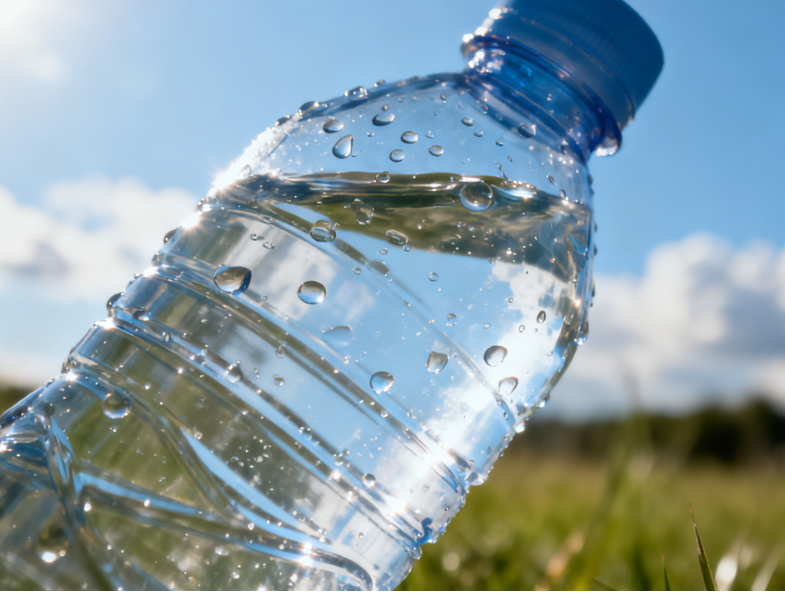Water hardness is one of the most common—and most overlooked—water quality issues affecting homes, industries, and environmental systems worldwide. While many people only notice hardness when soap won’t lather or white scale appears on faucets, the truth is that hard water can influence everything from appliance lifespan to agricultural productivity and industrial performance.
Understanding why water hardness is important and learning how to measure it accurately is essential for maintaining water system efficiency, preventing damage, and ensuring product or environmental safety. Modern tools like the ERUN-SP9 multi-parameter water quality analyzer now make hardness testing easier, more precise, and more convenient than ever.
In this article, we break down what hardness is, why it matters, and how you can test it effectively.
Water hardness refers to the concentration of dissolved minerals—primarily calcium (Ca²⁺) and magnesium (Mg²⁺) ions—present in water. These ions come from the natural dissolution of rocks such as limestone and chalk, and they accumulate as water travels through mineral-rich soil.
There are two types of hardness:
Temporary hardness (carbonate hardness): Caused by bicarbonates; removable by heating or boiling.
Permanent hardness (non-carbonate hardness): Caused by chlorides, nitrates, and sulfates; not removed by boiling.
Water hardness is typically measured in mg/L (ppm) of CaCO₃, but may also appear in grains per gallon (gpg), especially in North America.
White scale deposits on kettles, pipes, and showerheads
Soap that won’t lather easily
Stiff laundry or dull-looking clothes
Glassware leaves white spots
Reduced water pressure due to blocked pipes
Boiler and heater efficiency loss
These symptoms are more than just inconveniences—they signal that water chemistry is impacting your system efficiency and long-term costs.

Hard water leads to limescale buildup, a stubborn layer of calcium carbonate that coats heating elements and pipe interiors. Even a thin layer of scale reduces heating efficiency significantly, causing higher electricity bills and shortening the lifespan of:
Water heaters
Boilers
Coffee machines
Washing machines
Dishwashers
In pipes, scale gradually restricts water flow, leading to poor performance or expensive replacements.
Hard water affects taste, clarity, and even water filtration systems. Filters become clogged faster, requiring more frequent replacement. In drinking water systems, high hardness combined with other contaminants may reduce overall water quality or interfere with disinfection processes.
In industrial boilers and cooling systems, hardness is particularly dangerous. Scale buildup reduces heat transfer, contributes to overheating, and can cause serious equipment failure. Industries often spend large sums annually on scale prevention, descaling, and downtime repairs.
Aquatic life depends on stable mineral and pH levels. Hardness affects:
pH buffering
Fish stress levels
Fertility and growth rates
For agriculture, excessive hardness impacts soil quality and nutrient absorption. Softening or adjusting water hardness becomes essential for plant health.
While calcium and magnesium are not harmful—and even beneficial—excessive hardness can interact with other treatment chemicals or metals in pipes. Monitoring hardness is key to maintaining balanced and safe water quality.
Test strips: Cheap, fast, but approximate.
Titration kits: More accurate than strips but require manual steps and user skill.
These may work for quick checks but are not ideal for long-term monitoring, industrial needs, or precise control.
Digital meters help automate hardness testing, though conductivity-based estimations only offer a general understanding of overall mineral content—not exact hardness.
For laboratories, industries, environmental monitoring units, and field technicians, comprehensive water analysis is essential.
The ERUN-SP9 portable multi-parameter water quality tester brings high-level precision and efficiency with:
Advanced optical method + 16-channel design
Detection of 60+ water quality parameters
Accurate hardness measurement plus pH, conductivity, TDS, salinity, dissolved oxygen, and temperature
Free parameter combination to meet diverse testing needs
Dual temperature-controlled digestion for chemical tests
Long-lasting lithium battery for field operations
This makes it far more powerful than single-parameter hardness meters.

Solutions include:
Install a water softener
Use RO purification for drinking water
Descale appliances periodically
Apply water softening systems
Implement boiler blowdown procedures
Conduct regular scaling inspections
Adjust mineral levels slowly
Monitor pH and TDS to maintain a balanced environment
Testing before and after treatment with a device like ERUN-SP9 ensures interventions are effective.
Water hardness is more than a taste issue or cosmetic problem—it influences equipment lifespan, industrial efficiency, environmental stability, and water usability across many fields.
Testing hardness regularly allows you to:
Prevent limescale damage
Protect boilers and equipment
Improve water treatment efficiency
Support healthy aquaculture and agriculture
Ensure consistent water quality
With advanced tools like the ERUN-SP9 multi-parameter analyzer, checking hardness becomes accurate, fast, and accessible anytime—even in the field.
Understanding your water today means avoiding costly problems tomorrow.